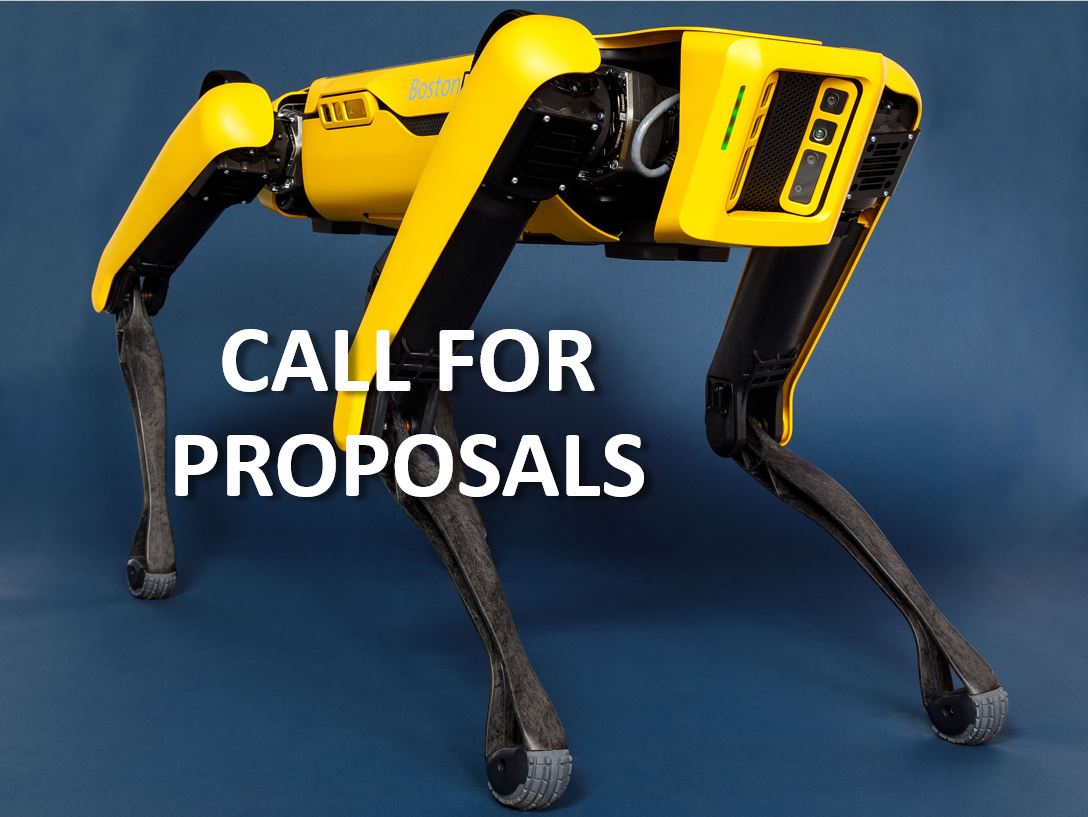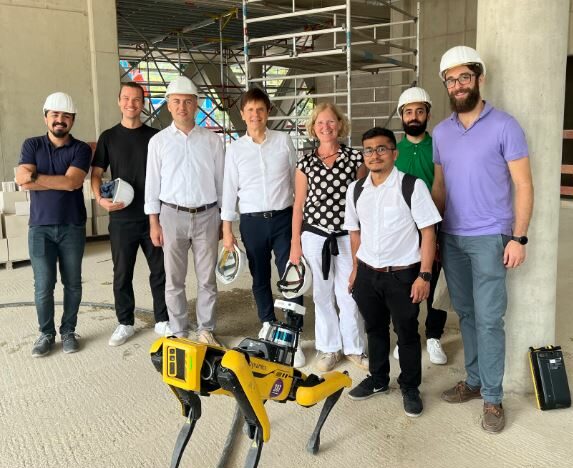Exploring Construction Automation with The Boston Dynamics Spot Robot Challenge
In September 2021, Autodesk Research launched a Call for Proposal (CFP) in partnership with Boston Dynamics that would leverage the Boston Dynamics Spot Robot. The CFP’s aim was to explore new opportunities for using a quadruped robotic platform with an openness to application and industry. This call was open to the academic, entrepreneur, and industry communities.
The Call for Proposal included some of the following language to help ground the audience in the breadth of opportunity with a platform like the Spot Robot:
Whether it’s on a construction site, agricultural environment, offshore energy installation, or operational environments like manufacturing spaces, the advantages of real-world robotic automation are seeing new use cases every day. With the goal of exploring new opportunities in this area of research, we invite teams to respond to the following call for proposals relating to the deployment of the quadruped robotic platform – Spot.
Accepted Teams were given access to the Autodesk Research Outsight Network Program, including access to the Spot Robot and Spot SDK (Software Development Kit) in the Autodesk Boston Technology Center. They received workshop and equipment safety training, as well as Spot specific hands-on training.
Autodesk Research and Boston Dynamics set out to support projects that advanced the development for use cases with the Spot Robot and automation. Autodesk received twenty proposals and the review team accepted four. Below are details about the four teams and their projects:
The University of Luxembourg – Luxembourg
The University of Luxembourg were already working with the Spot Robot and Spot SDK. The team proposed to continue their work by providing Spot with the capability to autonomously build a digital twin of construction sites connecting it with Autodesk BIM 360 to support early detection of deviations. This work required technical expertise in robotics, computer vision, and machine learning. The University of Luxembourg team went beyond the Spot Robot’s off-the-shelf Autowalk capabilities, adapting them for ever-changing construction sites. They did this by using real-time localization background information from BIM/Revit architectural plans.
The team recently shared how they’re using Situational Graphs (S-Graphs) to improve accuracy in robot localization and mapping to help in construction applications.
dConstruct – Singapore
dConstruct is a startup based in Singapore. They have extensive experience working with the Spot Robot and Spot SDK from a commercial lens. Their work explores 3D real-time Telepresence in construction, and, like the University of Luxembourg, they developed their own functionality in lieu of the off-the-shelf Autowalk feature. Their work as part of the CFP built upon their previous work where they successfully deployed Spot with Cameras only, no LIDAR/GPS/Radar for a fully autonomous run. Through their work they can remotely monitor a construction site with the assistance of the Spot Robot and allow Spot to do so in an autonomous manner.
dConstruct’s work continues and as a team they’ve been able to improve and refine their algorithms to support the Spot Robot’s localization within a construction site with a provided Revit/BIM model. The team published several papers about their work.
Skanska – USA
Skanska is a large, global General Contractor, with an Emerging Technology Group based in the United States. The Emerging Technology Team proposed a project for a real-world application to leverage the Spot Robot for automation in the construction jobsite housekeeping process. For their project, the team deployed the off-the-shelf Autowalk feature. The team identified the potential real-world jobsite for application and the stakeholders for the project. Autodesk and Boston Dynamics both participated in a design and scoping session with Skanska.
The Skanska team began their project by receiving training on the Spot Robot and Spot SDK at the Boston Autodesk Technology Center. They deployed Autowalk functionality and tested certain use cases at the Boston Technology Center to better inform their work for the actual construction jobsite. They tested Spot on their jobsite two times, with months of construction progress in between visits. The team shared their work and results in a blog post and also presented at Autodesk University.
HPP Architects – Germany
The HPP Architects team focused on exploring digitalization and automation. Their area of research for the CFP was to explore the use of Spot to mark positions of interior installations, such as walls, mechanical equipment, support structures and similar on an active construction jobsite. They called this the Tagging Spot Project.
The theory of this Tagging Spot method is that it will be more precise and faster than the current method that requires a team of surveyors doing this type of role. Through their engagement in this CFP and working as part of the Autodesk Technology Centers, HPP Architects built new relationships and connections with others who have similar areas of work and interests, namely, The University of Luxembourg. Through this collaboration they were able to test a few milestones from the University of Luxembourg on one of the HPP Architects construction sites. Learn more about their work and this culminating milestone.
When Autodesk Research started this process, we weren’t entirely sure what the output might be, however, it exceeded our expectations. There is still plenty of work before we can actualize the use of a quadruped robotic platform in a fully autonomous way on a construction jobsite, but the work developed by these amazing teams have helped move those efforts forward.
As new technologies continue to advance and become more sophisticated, we know there will be breakthroughs with the adoption of platforms like Boston Dynamics’ Spot Robot. And with rapid advancement of technology like generative artificial intelligence, we wonder what might be unlocked sooner rather than later. How are you and your organizations exploring these types of automations? What are your teams most interested in exploring as it relates to automation? If you have an interest that you’d like to explore further in a community full of innovators, check out Autodesk Research’s residency program.
Angie Foss is a Network Development Manager at Autodesk Research.
Get in touch
Have we piqued your interest? Get in touch if you’d like to learn more about Autodesk Research, our projects, people, and potential collaboration opportunities
Contact us
